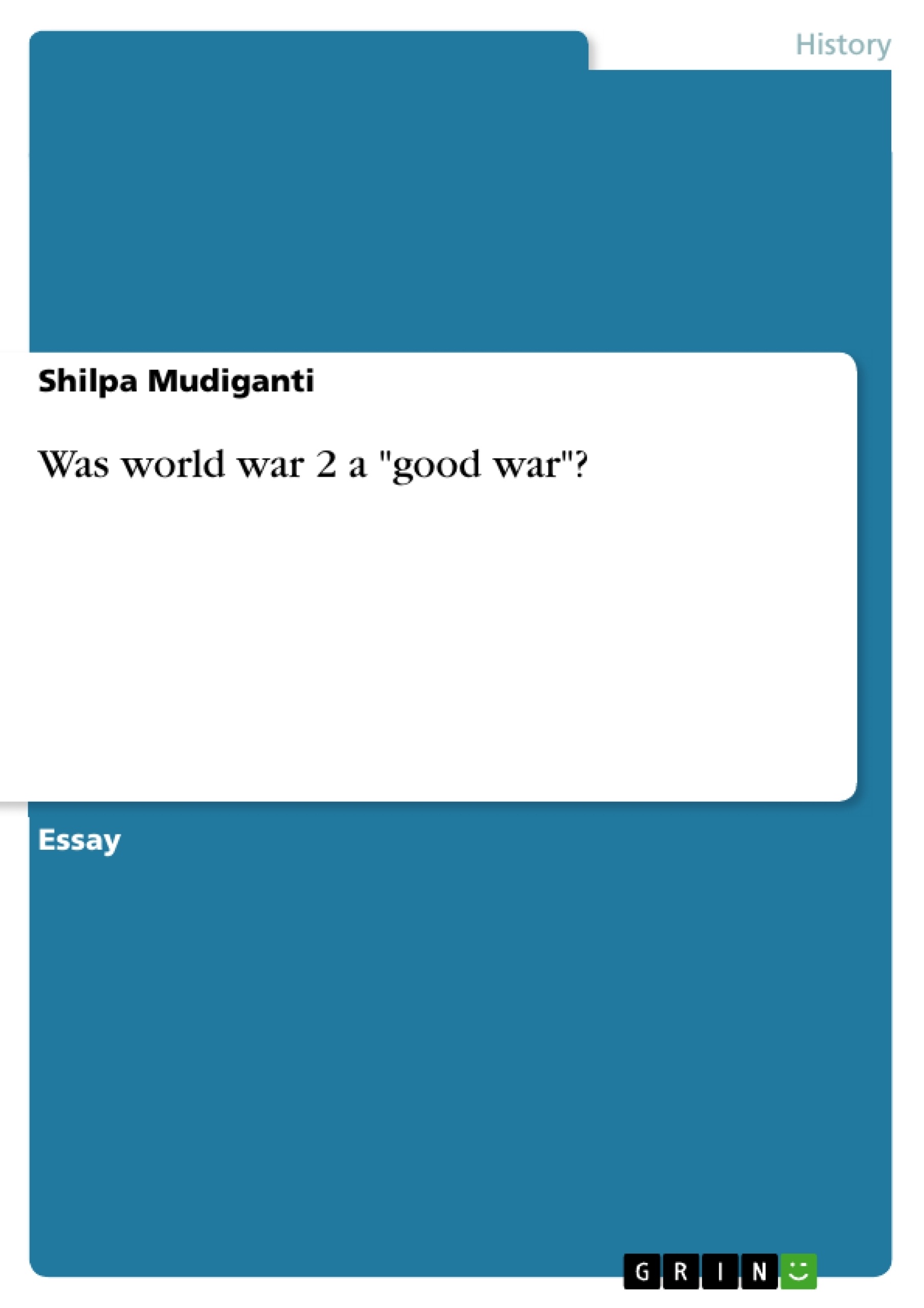World War II is widely known as the last “Good War” especially by United States of America. This statement gained more acceptances with the onset of wars like Vietnam and Korea which proved very unpopular to the American public. But was World War II truly a “Good War”? The second world war had always been considered to be a fight against Nazism and Fascism which represented the unimaginable evils. More than 70 million lives were lost fighting for the cause including the Hiroshima and Nagasaki nuclear bombing which resulted in the nuclear arms race. Though the evil forces of Nazism were defeated, a sobering account of atrocities caused by the allied forces and the unpleasant after-effects proves the opposite and renders the theory of “Good War” invalid.
Table of Contents
- Abstract
- Introduction
- The Second World War: A “Good War”?
- Air Raids and Bombardments
- Casualties and Atrocities
- The Aftermath and Economic Impacts
- The War’s Legacy: A Contradiction to Humanism?
- The Impact on America: A Double-Edged Sword?
- Conclusion
Objectives and Key Themes
This text explores the controversial claim that World War II was a "good war," challenging the prevailing narrative. The author delves into the complexities of the war, highlighting not only the fight against Nazism but also the devastating consequences and moral ambiguities associated with the Allied forces' actions. The key themes explored include:- The nature of war and its impact on civilians
- The moral complexities of war and the potential for atrocities by all sides
- The economic and social consequences of war
- The legacy of World War II, including the Cold War and the atomic bombings of Hiroshima and Nagasaki
- The role of the United States in World War II and its subsequent impact on the global order
Chapter Summaries
The text begins by introducing the idea that World War II is often considered the last “good war,” particularly in the United States, especially in contrast to the unpopular wars in Vietnam and Korea. The author then delves into the details of the war, highlighting the massive death toll and the fact that it involved the most powerful nations of the world. While the war did successfully defeat Nazi and Fascist regimes, the text argues that there were no other positive outcomes. The author then goes on to highlight the atrocities committed by the Allied forces, such as the widespread use of air bombardments that resulted in the deaths of millions of civilians.
The text also examines the economic consequences of the war, emphasizing the devastation that it caused in Europe, Asia, and Japan. The author also points out the large financial expenditures that the United States incurred during the war, leading to high inflation and increased taxation. The author further explores the legacy of the war, including the Cold War and the atomic bombings of Hiroshima and Nagasaki. He highlights the contradictory nature of a war fought in the name of humanism that ultimately resulted in such brutal acts.
The text then concludes by examining the impact of the war on the United States, arguing that it was a double-edged sword. While the war brought economic prosperity and a surge in patriotism, it also led to the curtailment of civil liberties, forced conscription, and the devastating atomic bombings.
Keywords
The text focuses on the controversial nature of World War II, examining its moral and economic implications. Key terms and concepts include the "good war" narrative, civilian casualties, war crimes, air bombardment, the Cold War, the atomic bombings of Hiroshima and Nagasaki, and the economic impact of the war.- Quote paper
- Shilpa Mudiganti (Author), 2008, Was world war 2 a "good war"?, Munich, GRIN Verlag, https://www.grin.com/document/117849




